AI for Visual Journalism: Techniques, Tools, and Ethical Considerations
The world of journalism is undergoing a significant transformation, with artificial intelligence (AI) at the forefront of this change. In the realm of visual journalism, AI is not just an enhancement but a game-changer, opening up new possibilities for storytelling and analysis. This article explores the myriad ways AI is being integrated into visual journalism, from the tools and techniques to the ethical considerations, offering a comprehensive guide for journalists eager to harness AI's potential responsibly and effectively. AI's influence spans from data visualization to geospatial analysis, image recognition, and fact-checking, revolutionizing the way stories are discovered, developed, and presented to audiences.
Key Insights into AI and Visual Journalism
- AI accelerates data analysis and visualization, making it easier for journalists to craft compelling visual stories.
- Tools like Google Earth Engine and OpenAI API are vital for AI-driven visual journalism.
- Ethical considerations, such as data privacy and bias mitigation, are crucial when deploying AI in journalism.
- Successful visual storytelling hinges on effective human-AI collaboration.
- AI excels in detecting patterns and trends within large geospatial datasets.
- Prompt engineering is essential for creating AI-driven design and visual elements.
- It's imperative for newsroom staff to be trained on the ethical use of AI to remain competitive.
- AI can generate concise summaries for use in descriptions, enhancing content accessibility.
The Convergence of AI and Visual Journalism
Defining Visual Journalism
Visual journalism harnesses images, graphics, and videos as the primary means of storytelling, transcending traditional text-based reporting. In an era where attention is scarce, visual journalism's ability to engage and retain audiences is more vital than ever.

It encompasses a range of techniques, including:
- Data Visualization: Converting complex datasets into visually engaging charts, graphs, and maps.
- Photojournalism: Capturing impactful images to document events and evoke emotions.
- Video Journalism: Producing short-form videos that convey narratives through visuals and sound.
- Interactive Graphics: Enabling audiences to delve into data and stories in an immersive, personalized manner.
- Geospatial Analysis: Utilizing geographical data to visualize and explore patterns.
AI's Role in Transforming Visual Journalism
AI is reshaping visual journalism in several key ways:
- Streamlining Data Analysis: AI algorithms swiftly analyze vast datasets, uncovering hidden trends and enabling data-driven storytelling.
- Automating Visual Creation: AI tools generate images, charts, and graphs from data, streamlining the visual creation process for journalists.
- Enhancing Storytelling: AI assists in crafting more engaging and immersive experiences through interactive graphics and personalized narratives.
- Improving Fact-Checking and Verification: AI helps detect manipulated visuals, ensuring the accuracy and authenticity of content.
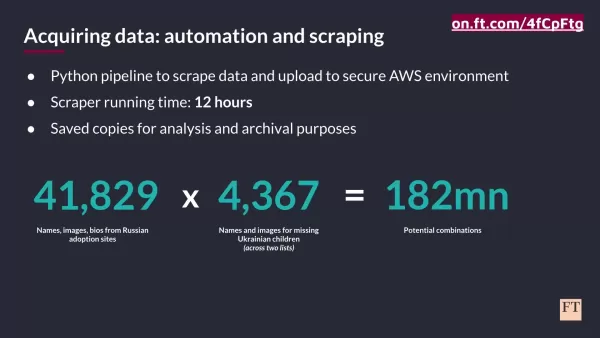
Essential Tools for AI-Enhanced Visual Journalism
To navigate the evolving landscape of AI in visual journalism, journalists need a versatile toolkit. Here are some indispensable tools:
- Legitimate.net: Offers AI-driven training, content generation, and fact-checking, designed to uphold journalistic integrity.
- Google Earth Engine: A cloud-based platform for geospatial analysis and visualization, perfect for tracking environmental changes, mapping conflict zones, and identifying migration patterns.
- Sentinel Hub: Provides access to satellite imagery, facilitating reporting on environmental and humanitarian issues.
- ChatGPT & Claude: Large Language Models that assist with coding, generating visualization elements, and summarizing stories, aiding in prototype design and storytelling development.
- Canva AI, Gemini & Image LLMs: Designed for creating prototypes and designing story elements.
- OpenAI API: Enables quick summarization of lengthy articles and reports into concise summaries.
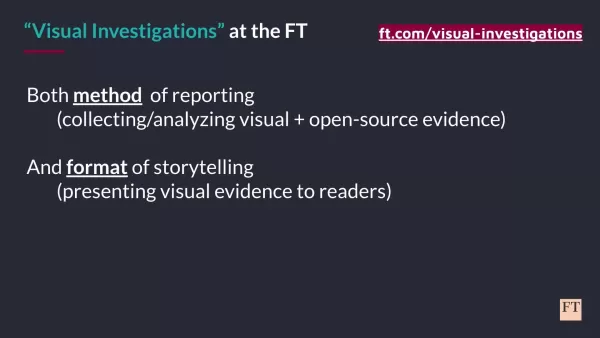
Frequently Asked Questions
What Ethical Considerations Are Crucial When Using AI in Visual Journalism?
Ethical considerations are paramount in AI-driven journalism. Data protection, especially when dealing with sensitive images like those of children, requires careful handling and adherence to legal and data protection procedures. Automation and AI can aid in this process, but it's essential to ensure that their use is ethical and does not harm the subject or mislead the audience.
How Can Small Newsrooms Integrate AI into Their Visual Journalism?
Small newsrooms can start by fostering in-house talent, identifying available tools and skills among team members, and strategizing around core competencies. Proficiency in data handling, programming, and data visualization tools is crucial. Training staff in web scraping, HTML, and prompt engineering can significantly enhance their ability to leverage AI effectively.
How Can AI Enhance Visual Storytelling?
AI offers numerous possibilities for enhancing visual storytelling. It can identify patterns in large datasets, generate visual narratives, and integrate with various data sources, including databases, satellites, social media, and public records. The key is effective collaboration between human journalists and AI systems.
Deeper Insights into AI and Storytelling
Best Practices for Transparency and Accuracy in AI-Driven Visual Journalism
Ensuring transparency and accuracy in AI-driven visual journalism requires a multi-faceted approach:
- Clear AI Usage Guidelines: Develop a comprehensive policy outlining ethical boundaries for AI usage, particularly in image generation and data analysis.
- Fact-Checking Protocols: Implement rigorous fact-checking, including verification of data sources, independent review of AI outputs, reverse image searches, and metadata analysis.
- Transparency with the Audience: Clearly label AI-generated content, explain methodologies used, and maintain a transparent correction policy.
Effective Collaboration Between Journalists and AI
Successful collaboration between journalists and AI requires a mindset shift and new skills. Building cross-disciplinary teams that include journalists, data scientists, designers, and AI specialists is crucial. Here are some tools that can facilitate this collaboration:
Category Tools & Platforms Description Data Visualization Flourish, Datawrapper, Tableau Create interactive charts, graphs, and maps that bring data to life. Image Generation Midjourney, DALL-E 2, Stable Diffusion Generate original images from text prompts, useful for illustrations and animations. Video Editing RunwayML, Descript Automate video editing tasks, such as transcription and visual effects. Fact-Checking & Verification Snopes, PolitiFact, CrowdTangle Verify information and detect misinformation, essential for AI use in journalism.
It's also important to upskill journalists and IT teams to ensure they are proficient in using these tools, thereby maximizing the potential of AI in visual storytelling.
Related article
 AI-Powered Cover Letters: Expert Guide for Journal Submissions
In today's competitive academic publishing environment, crafting an effective cover letter can make the crucial difference in your manuscript's acceptance. Discover how AI-powered tools like ChatGPT can streamline this essential task, helping you cre
AI-Powered Cover Letters: Expert Guide for Journal Submissions
In today's competitive academic publishing environment, crafting an effective cover letter can make the crucial difference in your manuscript's acceptance. Discover how AI-powered tools like ChatGPT can streamline this essential task, helping you cre
 US to Sanction Foreign Officials Over Social Media Regulations
US Takes Stand Against Global Digital Content Regulations
The State Department issued a sharp diplomatic rebuke this week targeting European digital governance policies, signaling escalating tensions over control of online platforms. Secretary Marco
US to Sanction Foreign Officials Over Social Media Regulations
US Takes Stand Against Global Digital Content Regulations
The State Department issued a sharp diplomatic rebuke this week targeting European digital governance policies, signaling escalating tensions over control of online platforms. Secretary Marco
 Ultimate Guide to AI-Powered YouTube Video Summarizers
In our information-rich digital landscape, AI-powered YouTube video summarizers have become indispensable for efficient content consumption. This in-depth guide explores how to build a sophisticated summarization tool using cutting-edge NLP technolog
Comments (11)
0/200
Ultimate Guide to AI-Powered YouTube Video Summarizers
In our information-rich digital landscape, AI-powered YouTube video summarizers have become indispensable for efficient content consumption. This in-depth guide explores how to build a sophisticated summarization tool using cutting-edge NLP technolog
Comments (11)
0/200
![AnthonyPerez]() AnthonyPerez
AnthonyPerez
 September 21, 2025 at 8:30:36 AM EDT
September 21, 2025 at 8:30:36 AM EDT
Me sorprende cómo la IA está transformando el periodismo visual, pero también me preocupa el sesgo en los algoritmos. ¿Cómo podemos asegurar que las herramientas de IA no distorsionen la realidad? Esto podría ser un arma de doble filo. 🧐


 0
0
![RalphSanchez]() RalphSanchez
RalphSanchez
 August 26, 2025 at 7:01:14 AM EDT
August 26, 2025 at 7:01:14 AM EDT
This article on AI in visual journalism is eye-opening! The way AI can transform storytelling with visuals is wild, but I wonder how we balance creativity with ethical concerns. 🤔 Exciting times!


 0
0
![StephenRoberts]() StephenRoberts
StephenRoberts
 August 25, 2025 at 11:01:14 PM EDT
August 25, 2025 at 11:01:14 PM EDT
This article really opened my eyes to how AI is shaking up visual journalism! The storytelling possibilities are wild, but I wonder if it’ll make journalists lazy or just super creative? 🤔


 0
0
![JustinJohnson]() JustinJohnson
JustinJohnson
 August 5, 2025 at 9:01:00 AM EDT
August 5, 2025 at 9:01:00 AM EDT
AI in journalism sounds wild! It's like giving reporters superpowers to craft mind-blowing visuals. But, gotta say, I'm a bit worried about deepfakes sneaking in. Ethics first, right? 🤔


 0
0
![BrianWilliams]() BrianWilliams
BrianWilliams
 August 4, 2025 at 11:01:01 AM EDT
August 4, 2025 at 11:01:01 AM EDT
This article really opened my eyes to how AI is shaking up visual journalism! The storytelling possibilities are wild, but I’m curious—how do we keep ethics in check when algorithms start shaping narratives? 🤔


 0
0
![LawrenceScott]() LawrenceScott
LawrenceScott
 July 27, 2025 at 9:20:21 PM EDT
July 27, 2025 at 9:20:21 PM EDT
AI in journalism is wild! It’s like giving reporters a superpower to craft stunning visuals. But, I wonder if it’ll make news too polished or less human? 🤔 Exciting, yet kinda scary!


 0
0
The world of journalism is undergoing a significant transformation, with artificial intelligence (AI) at the forefront of this change. In the realm of visual journalism, AI is not just an enhancement but a game-changer, opening up new possibilities for storytelling and analysis. This article explores the myriad ways AI is being integrated into visual journalism, from the tools and techniques to the ethical considerations, offering a comprehensive guide for journalists eager to harness AI's potential responsibly and effectively. AI's influence spans from data visualization to geospatial analysis, image recognition, and fact-checking, revolutionizing the way stories are discovered, developed, and presented to audiences.
Key Insights into AI and Visual Journalism
- AI accelerates data analysis and visualization, making it easier for journalists to craft compelling visual stories.
- Tools like Google Earth Engine and OpenAI API are vital for AI-driven visual journalism.
- Ethical considerations, such as data privacy and bias mitigation, are crucial when deploying AI in journalism.
- Successful visual storytelling hinges on effective human-AI collaboration.
- AI excels in detecting patterns and trends within large geospatial datasets.
- Prompt engineering is essential for creating AI-driven design and visual elements.
- It's imperative for newsroom staff to be trained on the ethical use of AI to remain competitive.
- AI can generate concise summaries for use in descriptions, enhancing content accessibility.
The Convergence of AI and Visual Journalism
Defining Visual Journalism
Visual journalism harnesses images, graphics, and videos as the primary means of storytelling, transcending traditional text-based reporting. In an era where attention is scarce, visual journalism's ability to engage and retain audiences is more vital than ever.

It encompasses a range of techniques, including:
- Data Visualization: Converting complex datasets into visually engaging charts, graphs, and maps.
- Photojournalism: Capturing impactful images to document events and evoke emotions.
- Video Journalism: Producing short-form videos that convey narratives through visuals and sound.
- Interactive Graphics: Enabling audiences to delve into data and stories in an immersive, personalized manner.
- Geospatial Analysis: Utilizing geographical data to visualize and explore patterns.
AI's Role in Transforming Visual Journalism
AI is reshaping visual journalism in several key ways:
- Streamlining Data Analysis: AI algorithms swiftly analyze vast datasets, uncovering hidden trends and enabling data-driven storytelling.
- Automating Visual Creation: AI tools generate images, charts, and graphs from data, streamlining the visual creation process for journalists.
- Enhancing Storytelling: AI assists in crafting more engaging and immersive experiences through interactive graphics and personalized narratives.
- Improving Fact-Checking and Verification: AI helps detect manipulated visuals, ensuring the accuracy and authenticity of content.

Essential Tools for AI-Enhanced Visual Journalism
To navigate the evolving landscape of AI in visual journalism, journalists need a versatile toolkit. Here are some indispensable tools:
- Legitimate.net: Offers AI-driven training, content generation, and fact-checking, designed to uphold journalistic integrity.
- Google Earth Engine: A cloud-based platform for geospatial analysis and visualization, perfect for tracking environmental changes, mapping conflict zones, and identifying migration patterns.
- Sentinel Hub: Provides access to satellite imagery, facilitating reporting on environmental and humanitarian issues.
- ChatGPT & Claude: Large Language Models that assist with coding, generating visualization elements, and summarizing stories, aiding in prototype design and storytelling development.
- Canva AI, Gemini & Image LLMs: Designed for creating prototypes and designing story elements.
- OpenAI API: Enables quick summarization of lengthy articles and reports into concise summaries.

Frequently Asked Questions
What Ethical Considerations Are Crucial When Using AI in Visual Journalism?
Ethical considerations are paramount in AI-driven journalism. Data protection, especially when dealing with sensitive images like those of children, requires careful handling and adherence to legal and data protection procedures. Automation and AI can aid in this process, but it's essential to ensure that their use is ethical and does not harm the subject or mislead the audience.
How Can Small Newsrooms Integrate AI into Their Visual Journalism?
Small newsrooms can start by fostering in-house talent, identifying available tools and skills among team members, and strategizing around core competencies. Proficiency in data handling, programming, and data visualization tools is crucial. Training staff in web scraping, HTML, and prompt engineering can significantly enhance their ability to leverage AI effectively.
How Can AI Enhance Visual Storytelling?
AI offers numerous possibilities for enhancing visual storytelling. It can identify patterns in large datasets, generate visual narratives, and integrate with various data sources, including databases, satellites, social media, and public records. The key is effective collaboration between human journalists and AI systems.
Deeper Insights into AI and Storytelling
Best Practices for Transparency and Accuracy in AI-Driven Visual Journalism
Ensuring transparency and accuracy in AI-driven visual journalism requires a multi-faceted approach:
- Clear AI Usage Guidelines: Develop a comprehensive policy outlining ethical boundaries for AI usage, particularly in image generation and data analysis.
- Fact-Checking Protocols: Implement rigorous fact-checking, including verification of data sources, independent review of AI outputs, reverse image searches, and metadata analysis.
- Transparency with the Audience: Clearly label AI-generated content, explain methodologies used, and maintain a transparent correction policy.
Effective Collaboration Between Journalists and AI
Successful collaboration between journalists and AI requires a mindset shift and new skills. Building cross-disciplinary teams that include journalists, data scientists, designers, and AI specialists is crucial. Here are some tools that can facilitate this collaboration:
| Category | Tools & Platforms | Description |
|---|---|---|
| Data Visualization | Flourish, Datawrapper, Tableau | Create interactive charts, graphs, and maps that bring data to life. |
| Image Generation | Midjourney, DALL-E 2, Stable Diffusion | Generate original images from text prompts, useful for illustrations and animations. |
| Video Editing | RunwayML, Descript | Automate video editing tasks, such as transcription and visual effects. |
| Fact-Checking & Verification | Snopes, PolitiFact, CrowdTangle | Verify information and detect misinformation, essential for AI use in journalism. |
It's also important to upskill journalists and IT teams to ensure they are proficient in using these tools, thereby maximizing the potential of AI in visual storytelling.
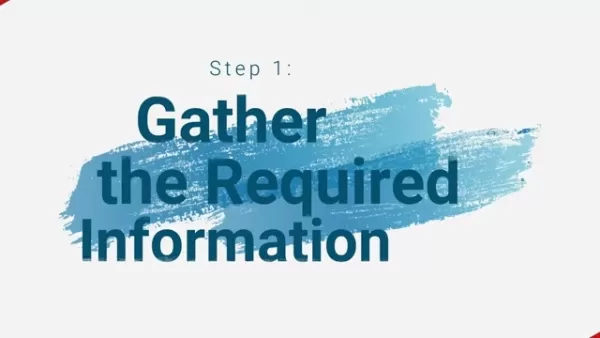 AI-Powered Cover Letters: Expert Guide for Journal Submissions
In today's competitive academic publishing environment, crafting an effective cover letter can make the crucial difference in your manuscript's acceptance. Discover how AI-powered tools like ChatGPT can streamline this essential task, helping you cre
AI-Powered Cover Letters: Expert Guide for Journal Submissions
In today's competitive academic publishing environment, crafting an effective cover letter can make the crucial difference in your manuscript's acceptance. Discover how AI-powered tools like ChatGPT can streamline this essential task, helping you cre
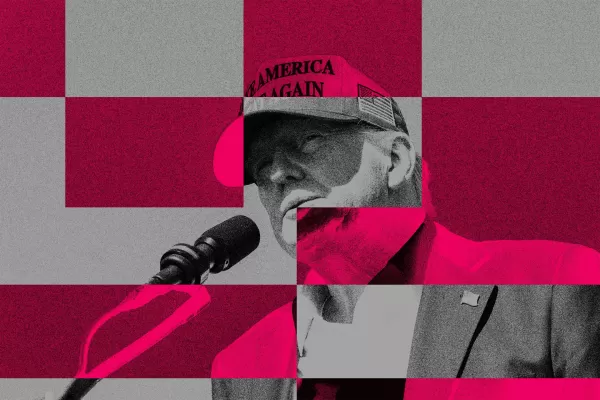 US to Sanction Foreign Officials Over Social Media Regulations
US Takes Stand Against Global Digital Content Regulations
The State Department issued a sharp diplomatic rebuke this week targeting European digital governance policies, signaling escalating tensions over control of online platforms. Secretary Marco
US to Sanction Foreign Officials Over Social Media Regulations
US Takes Stand Against Global Digital Content Regulations
The State Department issued a sharp diplomatic rebuke this week targeting European digital governance policies, signaling escalating tensions over control of online platforms. Secretary Marco
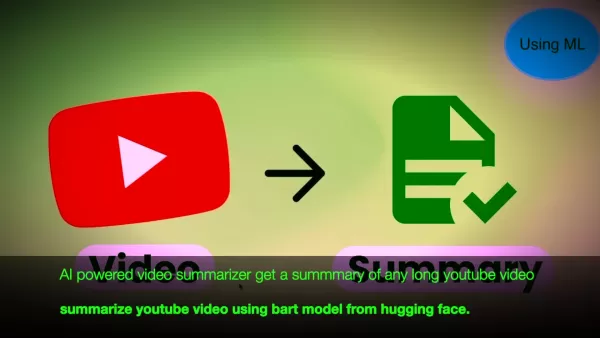 Ultimate Guide to AI-Powered YouTube Video Summarizers
In our information-rich digital landscape, AI-powered YouTube video summarizers have become indispensable for efficient content consumption. This in-depth guide explores how to build a sophisticated summarization tool using cutting-edge NLP technolog
Ultimate Guide to AI-Powered YouTube Video Summarizers
In our information-rich digital landscape, AI-powered YouTube video summarizers have become indispensable for efficient content consumption. This in-depth guide explores how to build a sophisticated summarization tool using cutting-edge NLP technolog
 September 21, 2025 at 8:30:36 AM EDT
September 21, 2025 at 8:30:36 AM EDT
Me sorprende cómo la IA está transformando el periodismo visual, pero también me preocupa el sesgo en los algoritmos. ¿Cómo podemos asegurar que las herramientas de IA no distorsionen la realidad? Esto podría ser un arma de doble filo. 🧐


 0
0
 August 26, 2025 at 7:01:14 AM EDT
August 26, 2025 at 7:01:14 AM EDT
This article on AI in visual journalism is eye-opening! The way AI can transform storytelling with visuals is wild, but I wonder how we balance creativity with ethical concerns. 🤔 Exciting times!


 0
0
 August 25, 2025 at 11:01:14 PM EDT
August 25, 2025 at 11:01:14 PM EDT
This article really opened my eyes to how AI is shaking up visual journalism! The storytelling possibilities are wild, but I wonder if it’ll make journalists lazy or just super creative? 🤔


 0
0
 August 5, 2025 at 9:01:00 AM EDT
August 5, 2025 at 9:01:00 AM EDT
AI in journalism sounds wild! It's like giving reporters superpowers to craft mind-blowing visuals. But, gotta say, I'm a bit worried about deepfakes sneaking in. Ethics first, right? 🤔


 0
0
 August 4, 2025 at 11:01:01 AM EDT
August 4, 2025 at 11:01:01 AM EDT
This article really opened my eyes to how AI is shaking up visual journalism! The storytelling possibilities are wild, but I’m curious—how do we keep ethics in check when algorithms start shaping narratives? 🤔


 0
0
 July 27, 2025 at 9:20:21 PM EDT
July 27, 2025 at 9:20:21 PM EDT
AI in journalism is wild! It’s like giving reporters a superpower to craft stunning visuals. But, I wonder if it’ll make news too polished or less human? 🤔 Exciting, yet kinda scary!


 0
0





























